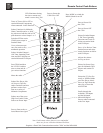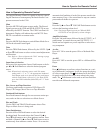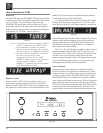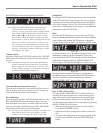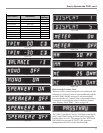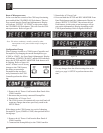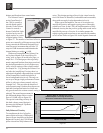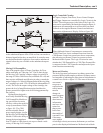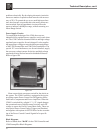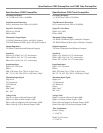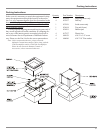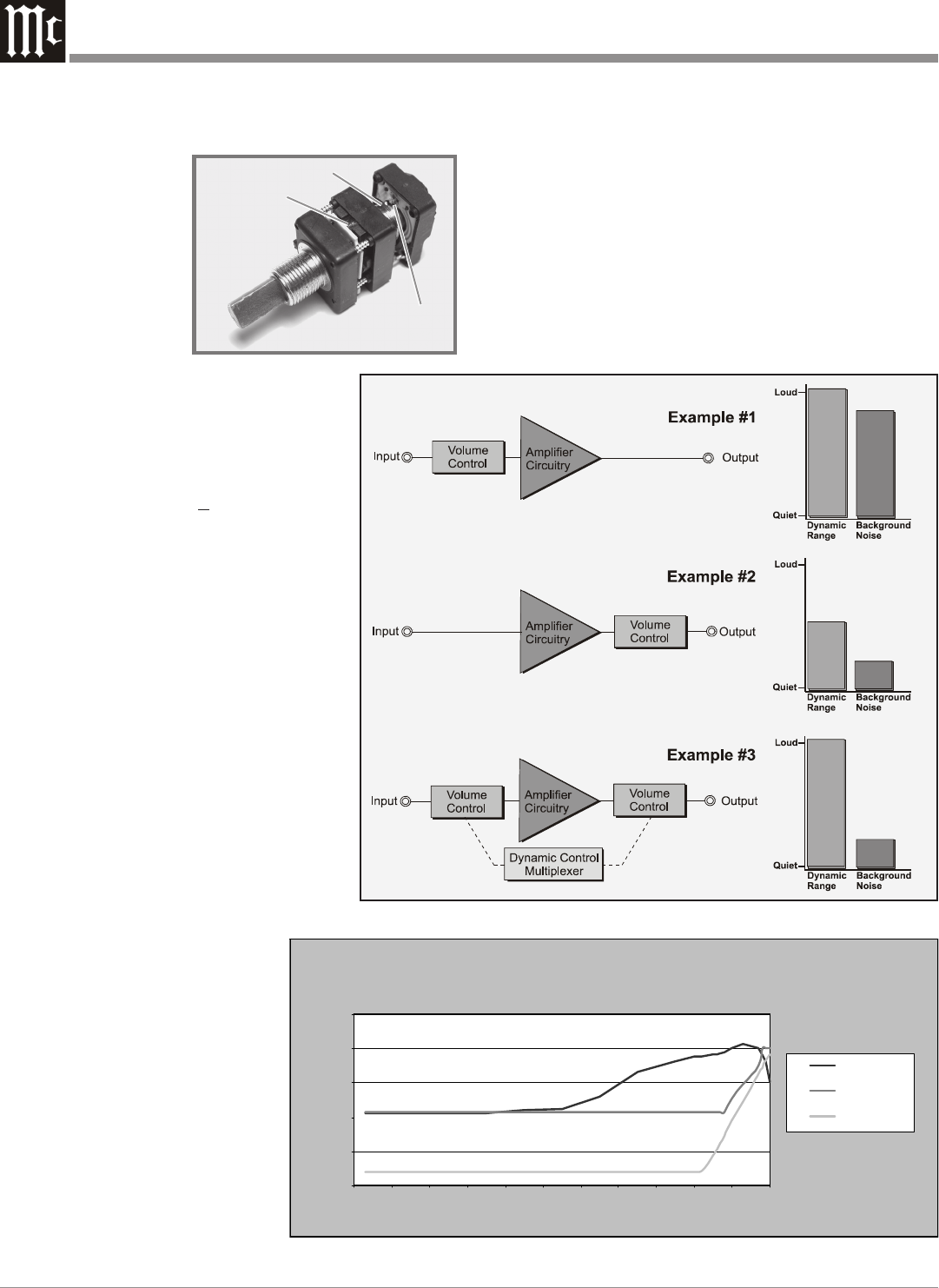
34
Figure 98
balance and freedom from control noise.
The Volume Control
on the Front Panel of
the C500 is actually a
special digital optical
encoder. As the Volume
Control is rotated, a
beam of Infra Red Light
is picked up by two in-
ternal sensors as a series
of digital pulses. Refer
to figure 97. The number of and time between
pulses are counted by a Microprocessor which
in turn controls the McIntosh designed Preci-
sion Electronic Attenuator that provides 213
steps in 0.5dB increments and maintains the
channel balance to within + 0.1dB.
With most Preamplifiers the Volume Con-
trol is placed ahead of the Amplifying Cir-
cuitry, refer to figure 98 on the next page, ex-
ample No.1. This design provides a great dy-
namic range and freedom from input overload,
but the background noise level is higher espe-
cially at lower settings of the volume control.
In example No. 2, by placing the Volume Con-
trol after the Amplifying Circuitry there is a
reduction in dynamic range and input overload
of the Preamplifier, but has the benefit of
lower background noise levels. The only cor-
rect way to design a high performance Pream-
plifier is with two volume controls, refer to
example No.3. This provides the benefits of
wide dynamic range, freedom from Input over-
load and a background noise level that actu-
ally goes down as the volume control setting is
reduced. The actual improvements in
this McIntosh design achieve a noise
floor of 118 dB, refer to figure 99.
The special controlling circuitry for
this dual volume control design is
known as the McIntosh “Dynamic
Control Multiplexer”.
Fully Balanced Circuitry
To compliment the level of perfor-
mance achieved in one of McIntosh’s
famous Power Amplifiers with Quad
Balanced Circuitry, the C500 Pream-
plifier also utilizes fully balanced cir-
cuitry. This design topology allows for the virtual cancela-
tion of all forms of distortion, both audible and measurable,
along with extremely low background noise levels.
In the typical Preamplifier, one set of circuits have to
amplify the positive and negative going parts of the audio
sound wave form. In the C500, the implementation of fully
balanced circuitry has the positive going audio sound waves
amplified by one set of circuits. In a similar manner the
negative going audio sound waves are amplified by another
set of circuits. Refer to figure 100. Audio signals connected
Figure 97
Sensors
Optical Disc
Infrared LED
Figure 99
Signal to Noise vs. Volume Level of the
C500 Preamplifier versus High Performance
Mechanical and Electronic Volume Controls
-95
-100
-105
-110
-115
-120
-95 -85 -75 -65 -55 -45 -35 -25 -15 -5 5 15
Volume Level (dB)
Signal to Noise (dB)
Mechanical
Electronic
C500




